Saturday, 12:00am
30 April 2022
Bosnian War Posters
A powerful collection of graphic art, collected shortly after the war ended, tells an emotive story of frenzied nationalism. By Daoud Sarhandi
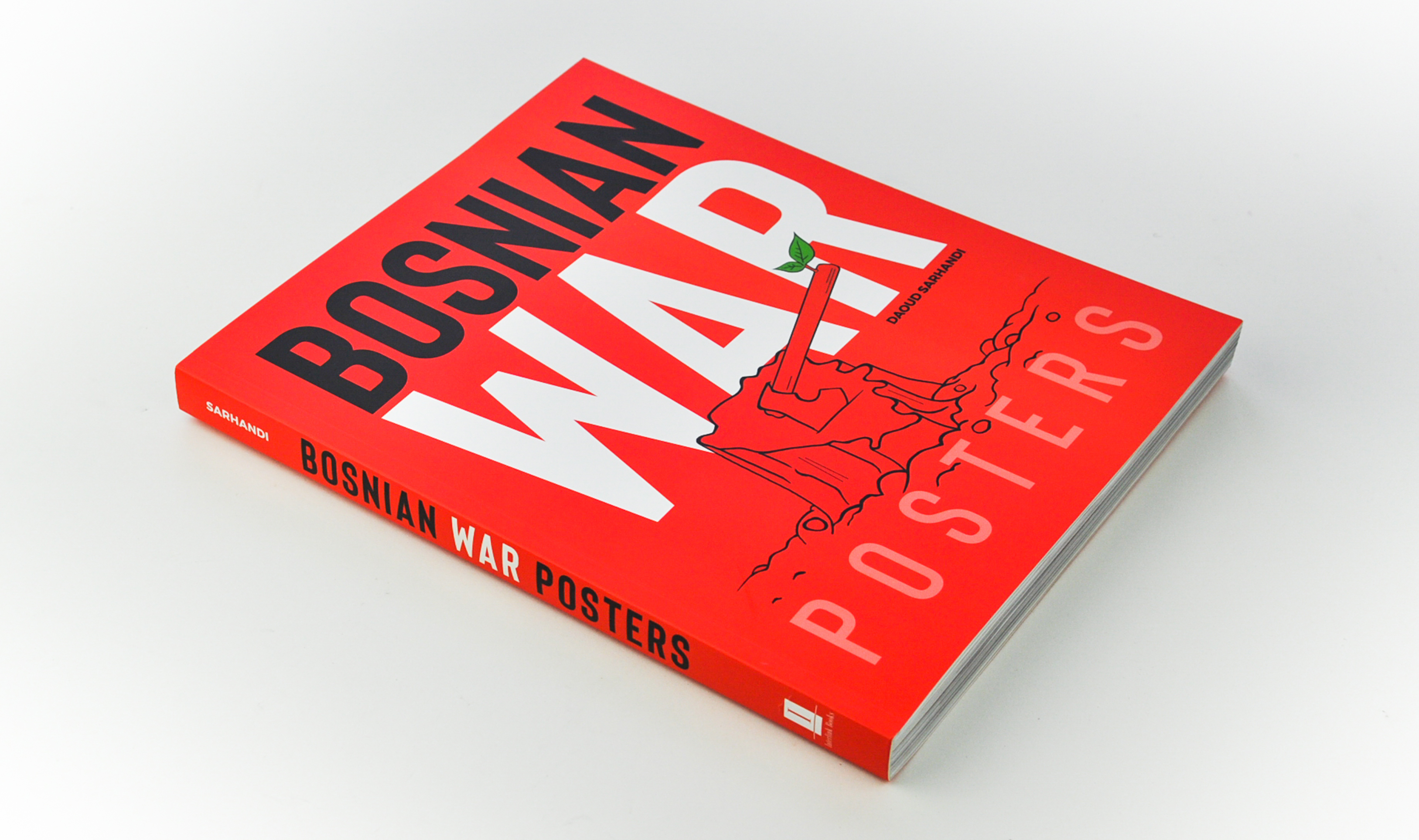
When I started work on the collection of posters that is about to be published as Bosnian War Posters, I
was far from being a writer or an expert on graphic design; I was a film editor, as I still am, writes Daoud
Sarhandi Williams.
In mid-1995, however, I put my career on hold and went to Bosnia with a burning sense of outrage at the genocidal events taking place in the heart of Europe. The ultra-violent breakup of the former Yugoslavia is comparable to the nationalistic war taking place in Ukraine today; at the time, back in the early 1990s, it felt apocalyptic.
Two years after my first trip to Bosnia, in Tuzla in the northeast of the country, I had the idea for this book. With Alina Boboc and Steven Gordon’s help – and with the support of Rupert and Stephanie Wolfe Murray (the founder of Canongate Books) – over the next year we tracked down and photographed around 700 posters, magazine covers and postcards.
Spread from Bosnian War Posters showing posters made spontaneously for the HVO (Croatian Defence Council) in 1993 (artists’ names unknown). Bosnian Muslims and Croats fought together at one point, a relationship that collapsed into bitter fighting when Croatia decided to annex part of Bosnia for itself, shortly after these posters were produced.

The next challenge was to select and shape these powerful images into a complete story of the war. And in this respect I now see that my film editing skills came in useful. I put Bosnian War Posters together in much the same way as a film is cut: poster-by-poster (i.e. ‘shot-by-shot’), section-by-section (i.e. ‘scene-by-scene’), from the “first act” to the dénouement – with the book’s captions serving as a kind of voiceover, guiding the reader on a predominantly informational level in counterpoint to the images that mainly work on an emotional one. Whenever I edit film, I often feel I am sculpting with images, sounds, and text – when I edited Bosnian War Posters I had a similar sensation, only without the sound.
Many posters used black humour and art references. UNtouchable references a photograph by August Sander, while Magritte’s famous pipe inspires a comment on the peace deal that created the 1994 Muslim-Croat federation. Both posters are by Art Publishing: Bojan Bahić, Sanda Hnatjuk and Zoran Buletić.
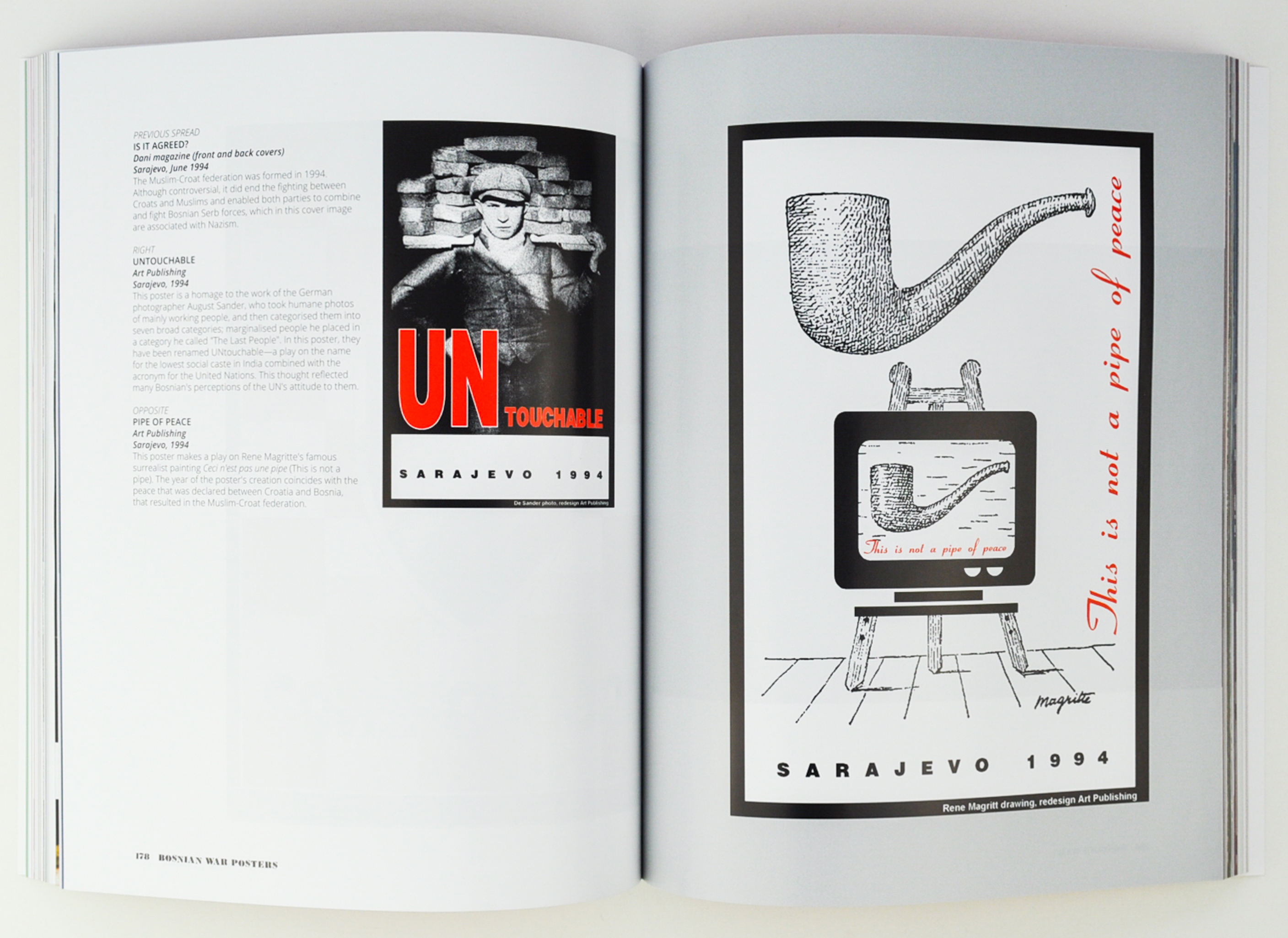
Fortunately, I had the great luxury (encouraged by Interlink Publishing) to be able to edit and design the book myself. I did this slowly over more than a year – taking care with each visual juxtaposition as well as the overall tonal composition of the book. When designing the book, if I felt I needed a photograph, I commissioned it or searched for one in an archive; if I sensed I had a hole in the story, I went back to my poster collection and found a suitable graphic image to plug the gap.
DANI (Days) magazine in Sarajevo led the way with its cover art as well as its reporting. These three DANI covers from 1995 equate Nazism with Serbian nationalism (left); deal with ethnically cleansed civilians from Srebrenica (top right); and depict people torn apart by shrapnel in Sarajevo in August 1995 (bottom right).
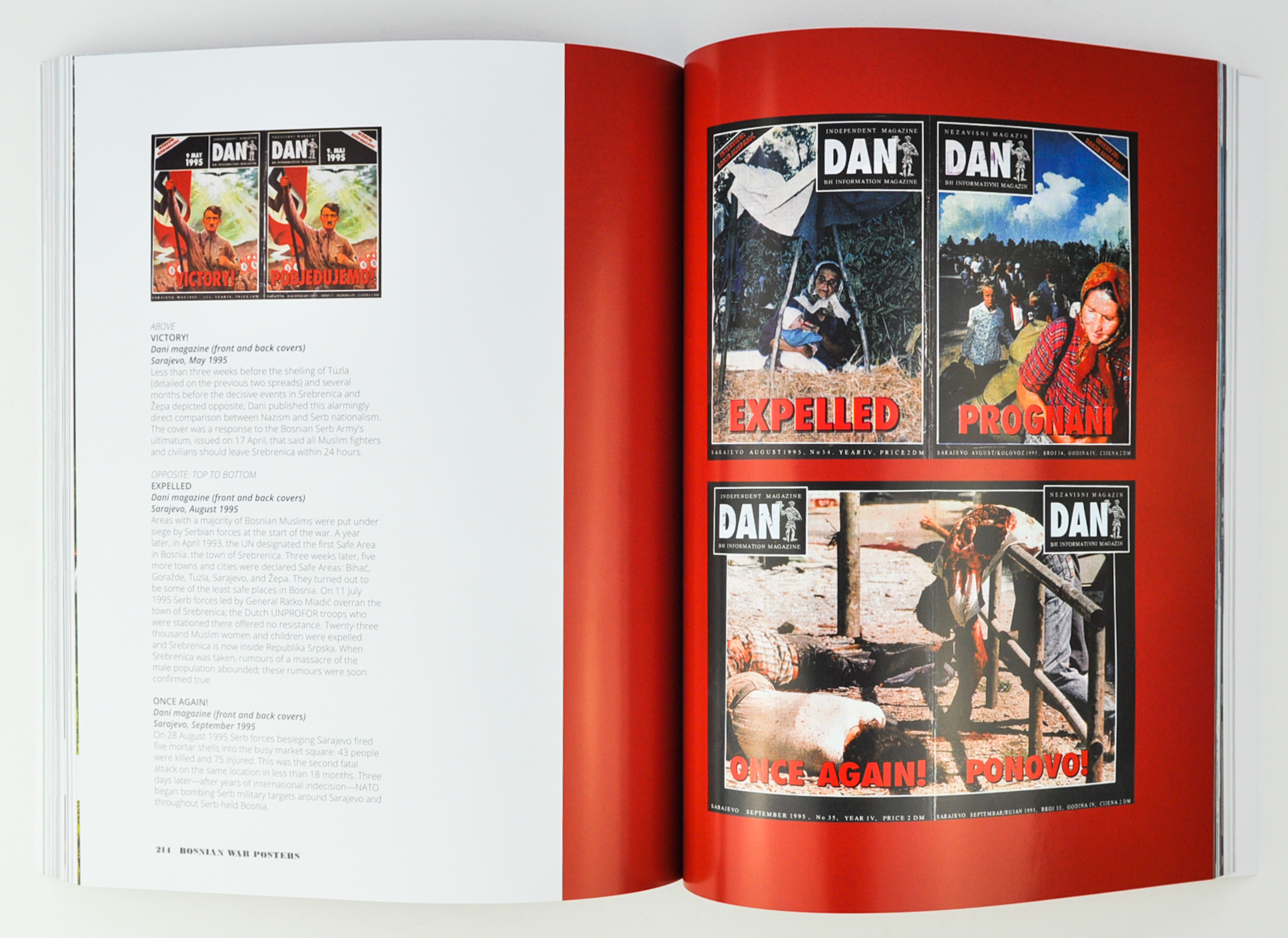
I wrote caption texts as the book expanded, primarily as visual discourse; and those texts were then rewritten many times with creative and investigative rigour. My Introduction was the first text to be finished, followed by three Prefaces (with one by Carol A. Wells at the Center for the Study of Political Graphics (CSPG), Los Angeles, and another by Bojan Hažihalilović at Trio, Sarajevo), and four Afterwords. All texts were subsequently translated into Bosnian, to make the book relevant locally as well as internationally.
Artist Asim Ðelilović
– originally from Travnik in central Bosnia – created a large set of
silkscreen posters, many of which are in Bosnian War Posters. Ðelilović was asked to adapt the Shigeo Fukuda-inspired Aftermath Bosnia (1997) for the book’s cover (an idea that came from Carolina Rivas, Sarhandi’s co-author on ‘This is 1968 … this is Mexico’ in Eye 56). Ðelilović reshaped the tree trunk to resemble Bosnia’s external borders.
Final book cover design and typography is by
Harrison Williams at Interlink Publishing.
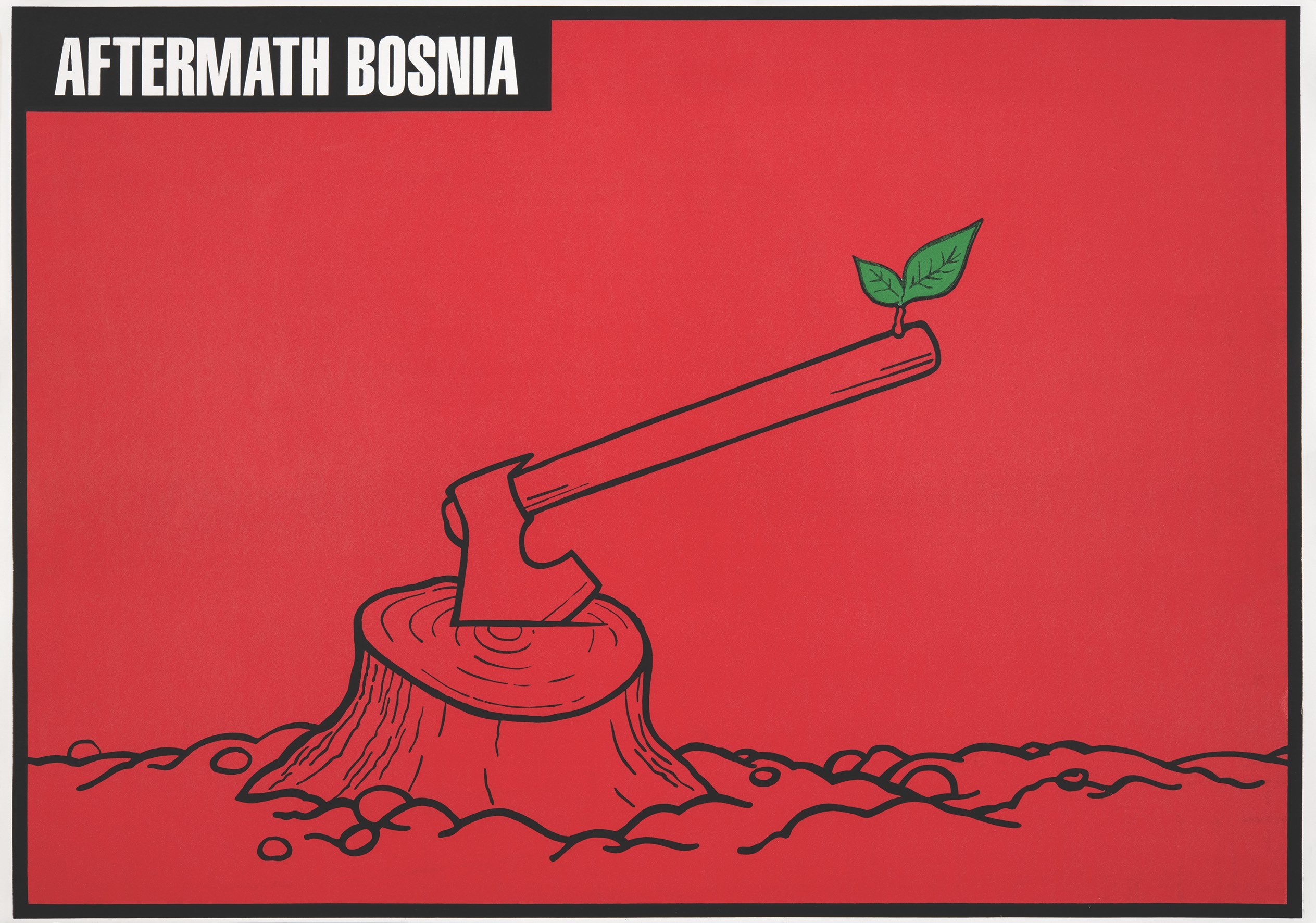
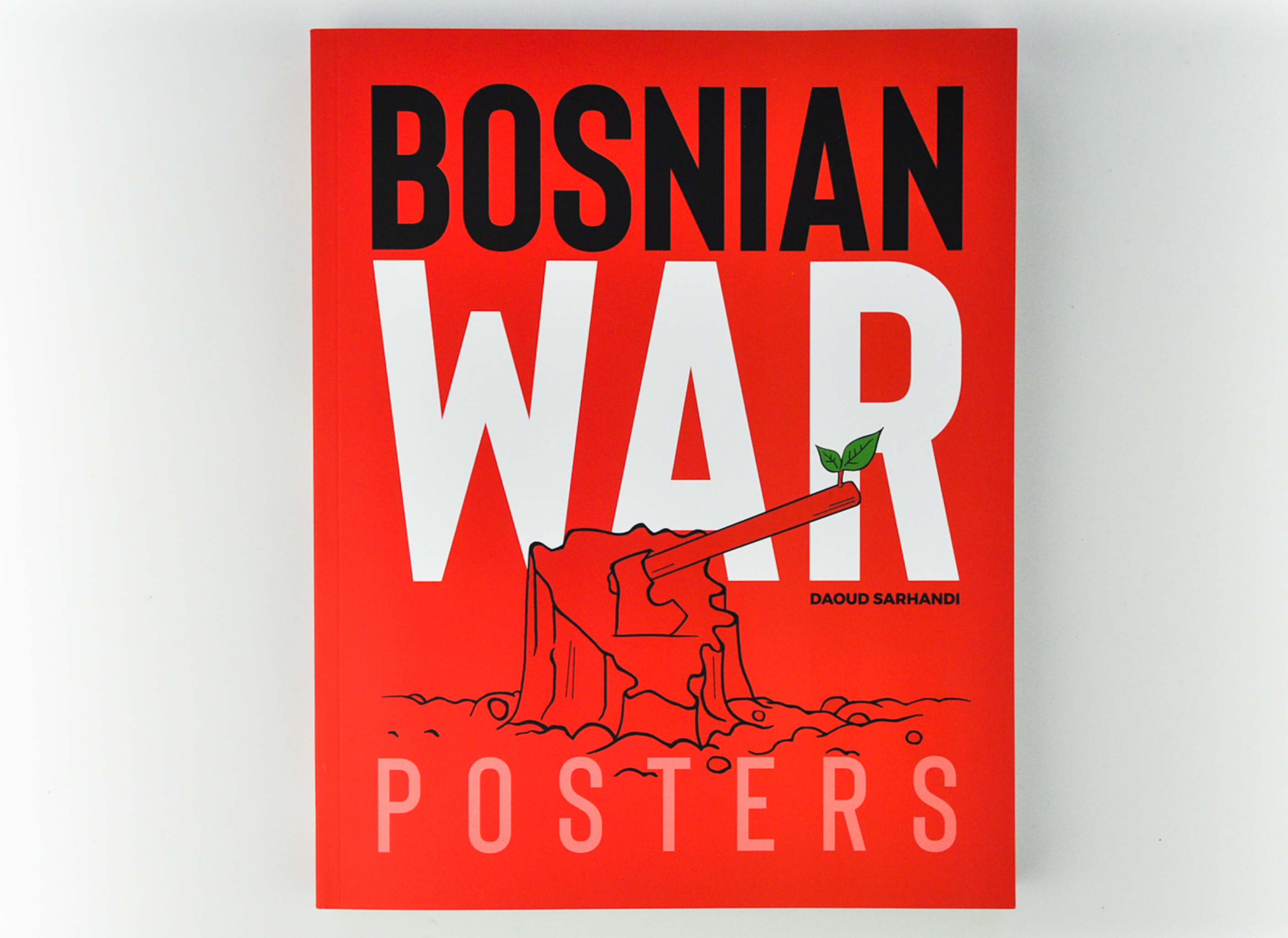
The book will be published in May 2022. I hope that when Bosnian War Posters is browsed (even without reading the texts) it will provoke an emotional response in the reader and stimulates personal thoughts, memories, and reflections – in much the same way that a great film can affect the viewer, even with the sound turned down.
Bosnian War Posters will be published in May 2022 by Interlink Books. A crowdfunding appeal at Indiegogo has been launched to help the publisher send free copies of the book to libraries in Bosnia and other parts of the former Yugoslavia. This is a good way to buy this powerful book (at a generous discount) and to help raise awareness in the region about what happened there 30 years ago, so that young Bosnians can understand their history. As Russian ultranationalism rears its head in Ukraine to terribly destructive effect, supporting this publishing and distribution effort is another way of showing solidarity with the forces of democracy and justice.
Daoud Sarhandi, author, editor, Catalonia
Eye is the world’s most beautiful and collectable graphic design journal, published quarterly for professional designers, students and anyone interested in critical, informed writing about graphic design and visual culture. It is available from all good design bookshops and online at the Eye shop, where you can buy subscriptions and single issues.
